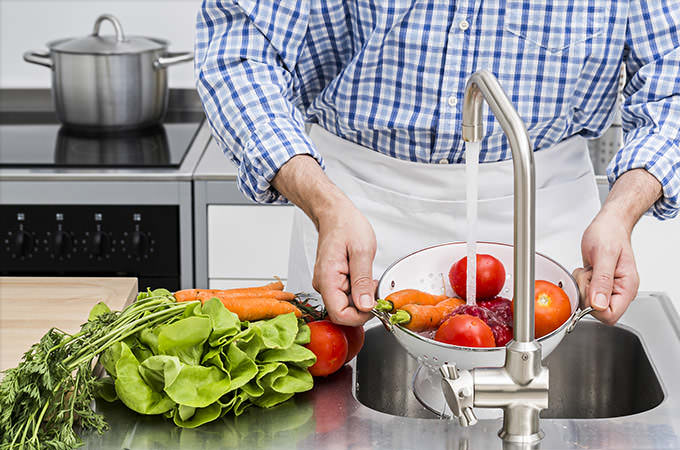
Regardless of whether your purchase your produce at a farmer’s market, a grocery store and whether you opt for organic or not, washing vegetables will reduce bacterial contamination and the risk of food-related illnesses.
Washing fresh foods and vegetables is a serious matter and should be dealt with as such.
We are all encouraged to eat more produce, but if what we eat is contaminated that would more than defeat the purpose.
Make sure your hands and kitchen counter are clean before you start washing fruits and veggies. Do not use any soap or detergent, just water, and possibly a little bit of vinegar or baking soda.
Clean the produce of all impurities, peel off the parts that are not edible and soak it in water for about 5 minutes. Rinse with clean water and soak again, this time either adding a pinch of baking soda or 1/2 cup distilled white vinegar per two cups water, as recommended by the University of Maine. Leave the produce in the water for another 10-15 minutes.
Finally, rinse with clean water or spray it with distilled water. The advantages of using bottled or distilled water lie in the fact that bottled and distilled water have been purified and contain little to no contaminants.
Protect your family from food-related illnesses and wash all fruits and vegetables before eating, regardless of whether you eat them raw or cooked.

